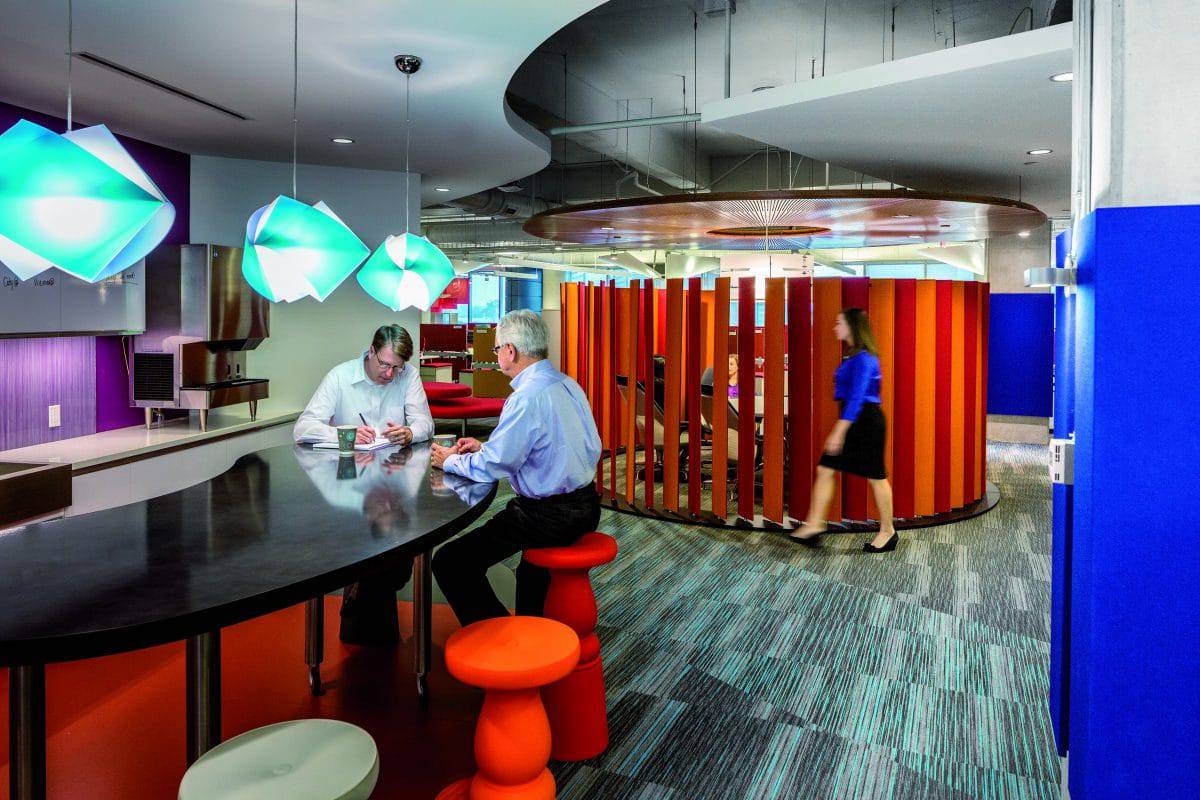
27 Nov From Classrooms to Boardrooms: Key Elements for Learning and Working Spaces
Picture a traditional classroom: orderly desks fashioned in rows, teacher at the front of the room, big chalkboard. Now, think about a traditional workplace: identical cubicles organized in row after row, the boss’ office at the helm.
There is a longstanding relationship between education and corporate environments. As Sir Ken Robinson said, “Public schools were not only created in the interests of industrialism — they were created in the image of industrialism.”
Today’s classrooms and offices are catering to a different world, a world driven by the Internet, smart phones, and other innovations unimaginable during the Industrial Revolution. There is also new research available that points to more effective approaches in teaching and learning.
Educators have realized that learning is more effective when students are engaged with one another (active learning) rather than when students sit and watch a lecture (passive learning). Retention rates are significantly higher when students are working together in collaborative, hands-on experiences. At the heart of active, project-based learning is the effort to develop students’ non-cognitive skills. These social/emotional skills — including communication, collaboration, creativity, perseverance and critical thinking — are uniquely fostered by this kind of active learning.
https://workdesign.com/2016/09/classrooms-boardrooms-key-elements-learning-working-spaces/



















